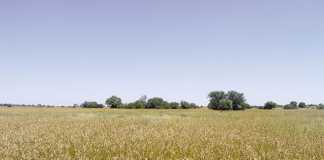If the crop has favourable climatic and pollination conditions, the large plantings could end three years of tight supplies and high prices, and lead to lower prices in South Africa towards the end of the year. “If the larger USA crops do materialise, it may result in the dollar prices of soya beans and yellow maize dropping 20% to 25%. That will affect local prices linked to the international price,” said Johan Willemse, professor of agri-economics at Free State University.
The rand will, however, have a big influence on local prices. “If the rand weakens to R12 to the dollar, local prices will not drop [despite a 20% to 25% reduction in dollar prices]. If the rand is stable at the R10 level, prices could drop 15% to 20%,” Willemse said. Price decreases could come through in the last quarter of 2013 and the first quarter of 2014. The USA harvests their crop in September and October, and it becomes available to the market from November.
“The big question for livestock industries is whether or not producers can survive until the last part of 2013. These industries are under a lot of pressure and smaller guys are dropping out. Lower production costs will give some much-needed breathing space for those intensive industries,” Willemse said.
Meadow Feeds SA managing director Andy Crocker said feed costs made up about 71% of poultry production costs, increasing by about 29% year-on-year. “Profitability in the poultry industry has been very weak,” Crocker said. “The sales price of chicken has remained very flat over the last four years.” While Crocker expected a decrease in feed prices towards the end of 2013 and beginning of 2014, he was not optimistic it would run as high as 15% to 20%.
“It should come down from the highs which we were exposed to as an industry but it won’t come down to the very low numbers that we experienced previously. Right now, any reduction in feed cost is helpful to the industry. The rand is the dark horse. We will have to see what it translates to.” Crocker pointed out, however, that poultry producers globally would be exposed to the same input cost reduction, which could again lead to cheaper imports.
Agri SA chief economist Dawie Maree said livestock farmers in the North West province were especially hard hit by the current high maize price. “They are experiencing severe drought and are in dire need of relief. They have applied for assistance from government to declare the area a disaster, to access drought relief funds,” Maree said. Maize and sunflower crops have been hit hard by the lack of rain, with reports of 40% to 50% of crops in the area being lost.











